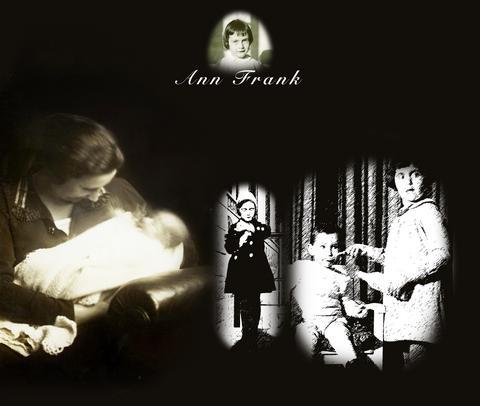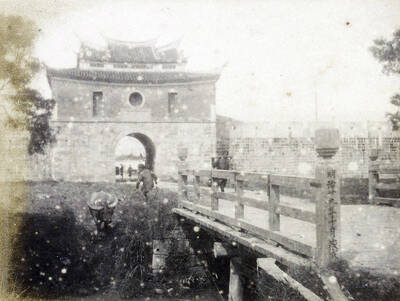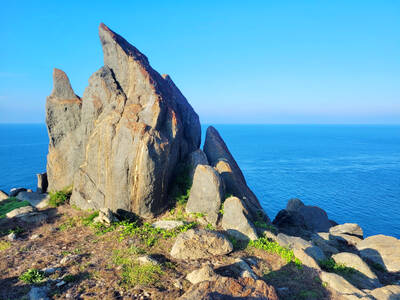August 1944 Anne Frank, the young Jewish girl whose journal of her life in hiding in Nazi-occupied Amsterdam made her a world-wide symbol for the Holocaust, was betrayed. Now, 60 years on, the question of who reported the Frank family to the Nazis remains unanswered.
Between 1942 and 1944 Anne Frank, her parents, older sister Margot and four other people hid in a small annex behind her father's office in the center of Amsterdam. In the cramped space Anne wrote of her daily life in hiding and her teenage fears and hopes.

PHOTOS: AFP
On August 4, 1944, after somebody reported their presence to the Nazis, Anne and the others were deported. She died in Bergen-Belsen concentration camp in March 1945, aged 15, shortly before the camp was liberated by the Allies at the war's end.
After the war, only Anne's father Otto returned from the camps. He got Anne's diary from a Dutch woman who helped the Frank family in hiding and published it. In 1952, when it was first published in English, the diary touched a nerve in the US and Anne came to symbolize the horrors of the Holocaust to people all over the world.
Over the years several theories have surfaced about who betrayed the Frank family and why.
"It is perfectly natural. If you see what happened to Anne Frank, you want to catch the culprit. People are angry and they want to know," Hans Westra, director of the Anne Frank Foundation in Amsterdam, said.
On Aug. 4, 1944, SS official Karl Joseph Silberbauer and three Dutch collaborators came to the Prinsengracht 263, where the Frank family was in hiding. The police arrived and demanded to be taken to the Jews in hiding and were taken straight to the annex, Silberbauer told investigators after the war. He could, however, not say who denounced the Frank family to the Nazis.
Over the years, three main suspects for the betrayal of Anne Frank emerged: Wim van Maaren, an employee of Otto Frank-Lena Hartog-Van Bladeren, a cleaning lady in the office and Anthon "Tonny" Ahlers, a committed Nazi who was also a petty thief who blackmailed Otto Frank.
Two years ago English researcher Carol Anne Lee, who wrote a biography of Otto Frank, pointed to Ahlers as the culprit. This former business associate of Otto was a well-known anti-Semite who needed money and protection from the Nazis, she argued.
Austrian writer Melissa Muller said Hartog-Van Bladeren betrayed the family because she feared she could be deported together with her husband for aiding the Frank family if they were discovered.
For many years Van Maaren was the main suspect but two post-war police investigations turned up nothing and he always professed his innocence.
After extensive research last year, historians of the Dutch War Documentation Institute concluded that we will probably never know who betrayed Anne Frank.
"The conclusion of our inquiry is that we do not consider any of the three suspects to be a likely candidate for the role of betrayer," the historians wrote.
The Germans burned their archives when they pulled out of Amsterdam and there is little chance today of finding evidence to substantiate any of the claims.
"Going into hiding with seven others in the center of Amsterdam, a situation where you even have to be afraid of the warehouse assistant in your old business and do not know what your neighbors are thinking and doing, greatly reduces your chances of survival. The annex could and still can be seen, by at least a hundred residents [in the area]," the historians explained.
The mystery of who betrayed the 15-year-old Anne Frank will probably always remain as her remarkable story continues to move people all around the world.
Her diary was translated into 69 languages and has sold over 31 million copies. The house where the family hid receives almost a million visitors each year.

June 9 to June 15 A photo of two men riding trendy high-wheel Penny-Farthing bicycles past a Qing Dynasty gate aptly captures the essence of Taipei in 1897 — a newly colonized city on the cusp of great change. The Japanese began making significant modifications to the cityscape in 1899, tearing down Qing-era structures, widening boulevards and installing Western-style infrastructure and buildings. The photographer, Minosuke Imamura, only spent a year in Taiwan as a cartographer for the governor-general’s office, but he left behind a treasure trove of 130 images showing life at the onset of Japanese rule, spanning July 1897 to

One of the most important gripes that Taiwanese have about the Democratic Progressive Party (DPP) is that it has failed to deliver concretely on higher wages, housing prices and other bread-and-butter issues. The parallel complaint is that the DPP cares only about glamor issues, such as removing markers of Chinese Nationalist Party (KMT) colonialism by renaming them, or what the KMT codes as “de-Sinification.” Once again, as a critical election looms, the DPP is presenting evidence for that charge. The KMT was quick to jump on the recent proposal of the Ministry of the Interior (MOI) to rename roads that symbolize

On the evening of June 1, Control Yuan Secretary-General Lee Chun-yi (李俊俋) apologized and resigned in disgrace. His crime was instructing his driver to use a Control Yuan vehicle to transport his dog to a pet grooming salon. The Control Yuan is the government branch that investigates, audits and impeaches government officials for, among other things, misuse of government funds, so his misuse of a government vehicle was highly inappropriate. If this story were told to anyone living in the golden era of swaggering gangsters, flashy nouveau riche businessmen, and corrupt “black gold” politics of the 1980s and 1990s, they would have laughed.

It was just before 6am on a sunny November morning and I could hardly contain my excitement as I arrived at the wharf where I would catch the boat to one of Penghu’s most difficult-to-access islands, a trip that had been on my list for nearly a decade. Little did I know, my dream would soon be crushed. Unsure about which boat was heading to Huayu (花嶼), I found someone who appeared to be a local and asked if this was the right place to wait. “Oh, the boat to Huayu’s been canceled today,” she told me. I couldn’t believe my ears. Surely,